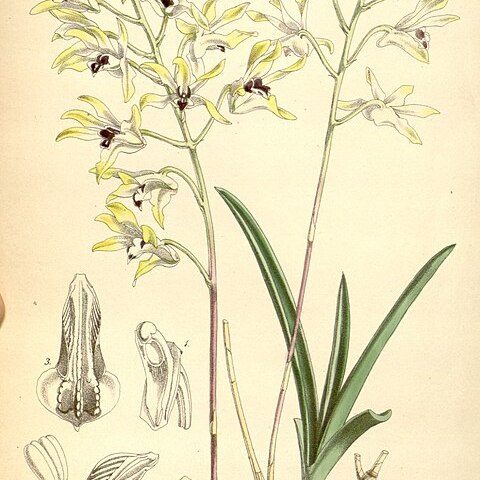Pseudobulbs onion-like, sometimes elongated, 30–120 × 10–30 mm. Leaves 2–6, terminal, 100–250 × 6–12 mm, thick, fleshy, dark green, deeply channelled. Racemes 100–400 mm long, 5–30-flowered. Flowers 20–25 × 25–30 mm, light brown to caramel with darker tips, centre sometimes whitish or green. Sepals and petals twisted near pointed apex. Dorsal sepal 10–15 × 3–4 mm. Lateral sepals 10–15 × 3–4 mm. Petals 13–18 × 2.5–3 mm, erect. Labellum 10–13 × 7–9 mm, white with purple streaks, sometimes heavily marked; lateral lobes broad, erect; midlobe not stalked, 4–5 mm wide, shortly pointed with 3 wavy ridges extending nearly to apex of midlobe.
Pseudobulbs crowded, onion-like to spindle-shaped, 30–120 × 15–25 mm. Leaves 2–6, terminal, 80–200 × 4–8 mm, fleshy, deeply channelled. Racemes 100–300 mm long, 5–50-flowered. Flowers 15–20 × 22–30 mm, white with yellow or brown tips. Sepals and petals widely spreading, apex twisted. Dorsal sepal 10–16 × 2–3 mm. Lateral sepals 10–18 × 2–3 mm. Petals 12–18 × 2–2.5 mm. Labellum 10–12 × 5–6 mm, white with purple streaks and suffusions; lateral lobes narrow, erect; midlobe stalkless, 4–5 mm wide, shortly pointed, with 3 ridges which break up into series of small crests.


